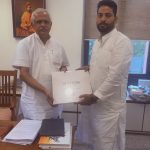Prophecy, often associated with mysticism or divine foresight, seems an unlikely concept to pair with the rigorous, logical world of mathematics. Yet, the idea of prophecy in mathematics captures the remarkable ability of mathematicians to predict patterns, outcomes, and truths about the universe long before empirical evidence or computational power can confirm them.
In mathematics, prophecy does not involve supernatural foresight but rather an extraordinary blend of intuition, pattern recognition, and logical reasoning. Mathematicians often propose conjectures—hypotheses based on observed patterns or deep insights—that predict the behaviour of mathematical systems. These conjectures, while unproven at the time, can guide research for decades or even centuries, acting as beacons for future discoveries. The “prophetic” quality lies in the ability to foresee truths that are later validated through rigorous proof or empirical observation.
This phenomenon is rooted in the universal and timeless nature of mathematics. Unlike other sciences, where theories are tested against physical experiments, mathematical truths exist independently of the physical world. A conjecture, once proven, is true for all time, giving mathematical prophecy a unique permanence.
In ancient cultures such as the Babylonian, Egyptian, and Mayan civilizations, mathematics was closely tied to astronomy, agriculture, and ritual life. Priests and scholars used mathematical knowledge to predict eclipses, solstices, and floods—phenomena that were deeply significant in religious and cultural terms. The Mayan calendar, built on precise astronomical mathematics, was seen as a roadmap to cosmic cycles and future ages. Pythagoras and his followers believed that “everything is number.” The harmony of the universe, music, and geometry was interpreted as evidence of a divine plan.
Babylonian mathematicians calculated planetary motions centuries before modern science, blending science and spiritual belief. Scholars like Al-Kindi and Al-Khwarizmi saw mathematics as a means to understand the perfection of God’s creation. Complex geometric patterns express the infinite nature of God while avoiding human depiction. In Hindu temples, architectural designs follow strict mathematical ratios to represent cosmic principles. Christian cathedrals of the Gothic era often follow golden ratios and symmetrical forms to symbolize divine order.
Isaac Newton’s laws of motion and gravity used mathematics to predict planetary orbits—turning the cosmos into a predictable system. The concept of Laplace’s Demon imagined a universe where perfect mathematical knowledge of the present could determine the future with certainty. Today, weather forecasting, stock market analysis, climate modelling, and even political predictions are based on mathematical simulations. Companies use machine learning and big data to predict human behaviour, preferences, and risks.
Mathematics has also played a prophetic role in spiritual and mystical traditions. In Kabbalistic Judaism, numbers reveal hidden meanings in sacred texts. In Islamic numerology, letters and numbers are used to uncover divine messages. In Indian traditions, numbers and planetary positions determine auspicious timings and destinies. However, prophecy in mathematics is not about mysticism but about the profound human capacity to anticipate truths through logic, intuition, and pattern recognition.
For instance, the Riemann Hypothesis has been tested for billions of zeros, all conforming to Riemann’s prediction. While this is not a proof, it bolsters confidence in the conjecture and guides further theoretical work. Machine learning and artificial intelligence are also beginning to play a role. Algorithms can identify patterns in data that humans might overlook, suggesting new conjectures or refining existing ones. This raises an intriguing question: can machines become mathematical prophets, or will human intuition remain essential to glimpsing the next great truth?
Mathematical prophecy often begins with intuition—a mathematician’s ability to sense patterns or truths before they can be formally articulated. This intuition is not arbitrary but built on deep familiarity with mathematical structures. For example, Ramanujan, the self-taught Indian mathematician, produced thousands of formulas, many of which seemed to emerge from nowhere. His insights into partition functions and infinite series were so far ahead of his time that they were later proven to have applications in physics and computer science. Ramanujan’s work exemplifies how intuition can act as a prophetic guide, leading to discoveries that only later find their place in the mathematical canon.
Pattern recognition also plays a critical role. The Fibonacci sequence, for instance, was identified centuries ago, but its appearance in nature—from sunflower spirals to galaxy formations—was only later recognized. Such discoveries highlight the enduring connection between abstract mathematical ideas and the physical world.
The prophetic tradition in mathematics continues to thrive. Unsolved problems like the Birch and Swinnerton-Dyer Conjecture or the P vs. NP problem represent modern prophecies. Some see mathematics as a spiritual path, others as a scientific oracle. In both cases, it remains a profound symbol of humanity’s quest to understand and foresee the cosmos.
(Author is a postgraduate student of Mathematics from the University of Kashmir and can be reached at: [email protected])








